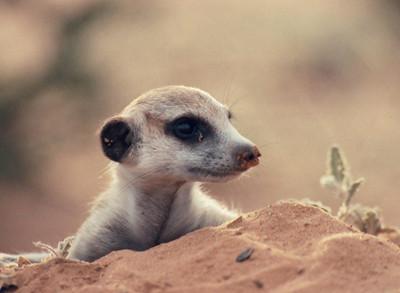What looks like the thumb on six-fingered moles is really a giant wrist bone that develops separately from the five true fingers. Steve Mirsky reports
史蒂夫.米尔斯基报道说,六指鼹鼠身上看起来像大姆指的东西其实是从五只真正的手指分离而长出的一只巨大手腕骨。
 Former major league pitcher Antonio Alfonseca had six fingers on each hand. One of his coaches was once asked about the consequences of Alfonseca having six fingers and replied, “He can’t flip you off.” Think about it.
Former major league pitcher Antonio Alfonseca had six fingers on each hand. One of his coaches was once asked about the consequences of Alfonseca having six fingers and replied, “He can’t flip you off.” Think about it.
前主要联盟投手安东尼.奥芬西卡每只手长了六根手指。他的一个教练曾被问及奥芬西卡长有六根手指的影响时答道:“他没法用手指弹你。”你想想看。
Well, neither can many moles. Because most individuals of the type called talpid moles also apparently have six fingers on each foot. Or at least it looks that way. Now a study shows that they really only have the regular old five true fingers. The real thumb looks like the other four fingers, and what appears to be the thumb is actually a much larger-than-normal version of the radial sesamoid bone of the wrist. The finding is in the Royal Society journal Biology Letters. [Christian Mitgutsch et al., "Circumenting the polydactyly ‘constraint’: The mole’s ‘thumb’"]
这个,许多鼹鼠也不会。因为这种叫talpid鼹鼠的大多数个体也很明显地在每只脚上长了六根指头。或者至少它看上去如此。现在一份研究表明鼹鼠事实上规则而老一套地仅长着五个真手指。那根真大姆指看上去跟其他四根没什么两样,而且看似大姆指的东西实际上是一只比正常大小大得多的腕部桡籽骨。这项发现来自英国皇家学会杂志《生物学快报》。
The fake thumb has no joints, a dead giveaway that it’s not a real finger. And molecular markers show that the five true fingers develop together in a mole embryo, with the outsized sesamoid cropping up later. The arrangement is probably an advantage for an animal that spends a lot of time digging. And doesn’t convey displeasure with hand signals.
这根山寨大姆指没有关节,所以说不是真手指,只是不发挥作用的赠品而已。而且分子标记显示五个真手指在鼹鼠胚胎中一起长出来的,后来突然长出了这只特大籽骨。这样安排很可能有利于要长时间挖土的动物。而且对这种安排,手指没有传出不满的信号。
来源:可可英语 http://www.kekenet.com/hangye/201201/169366.shtml Former major league pitcher Antonio Alfonseca had six fingers on each hand. One of his coaches was once asked about the consequences of Alfonseca having six fingers and replied, “He can’t flip you off.” Think about it.
Former major league pitcher Antonio Alfonseca had six fingers on each hand. One of his coaches was once asked about the consequences of Alfonseca having six fingers and replied, “He can’t flip you off.” Think about it.










